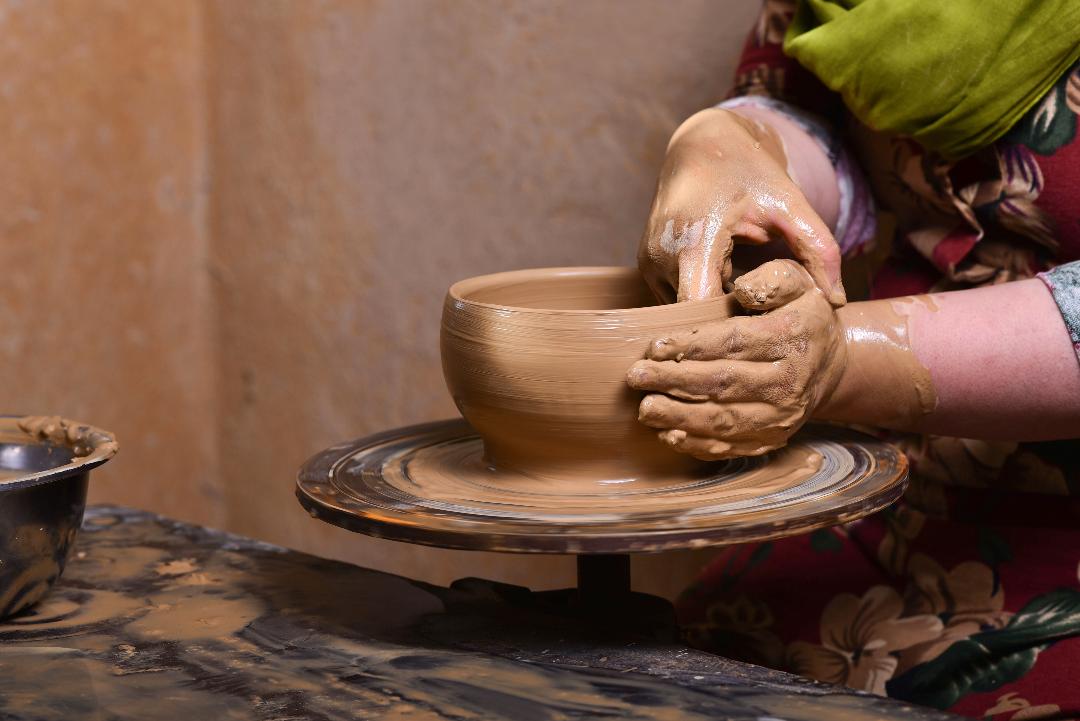The art of Pottery has a remarkable place in Iran’s history. According to the earthen dishes and statuettes excavated in different ancient places since 8000 BC pottery has been made in Iran, places like Teppe Sialk in Kashan, Susa, Teppe Marlik in northern Iran, and also Jiroft in Kerman.
Khayyam, the famous Iranian poet has used Potter, Pottery workshop, and Pot as the symbols of God, the universe, and humans in his quartets, presenting pottery as a very important element in Iranian culture. The following Robaei (quartet) is one of the most famous ones:
در کارگه کوزه گری رفتم دوش
دیدم دو هزار کوزه، گویا و خموش
از دستۀ هر کوزه، بر آورده خروش
صد کوزه گر و کوزه خر و کوزه فروش
In Modern Iran, many people are still busy with pottery as their job or as entertainment. In Lalejin or, the capital of pottery in Iran, located 20 km northwest of Hamadan, hundreds of earthen dishes, glazed in different colors, are produced every day. In Meybod which is a desert city near Yazd, the pottery dishes are ornamented with beautiful patterns like the sun, little birds, and fish and in Sistan-Baluchistan potter women paint geometric and abstracted patterns on their pottery dishes. In other provinces like Qom, Minab, Shahreza, and Bandar-Abbas you can find people who are busy with pottery. Although, in recent years many pottery workshops were closed in facing technology and modern life.
Join us to experience making pottery with your hands and learn lots of amazing tricks or, as we call it, Foot-e Kooze-gari.













